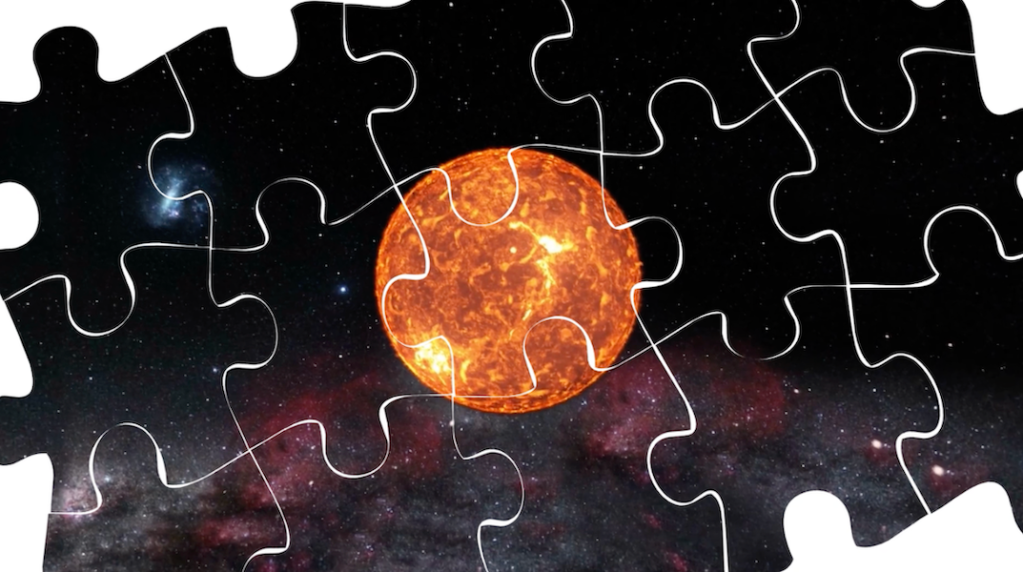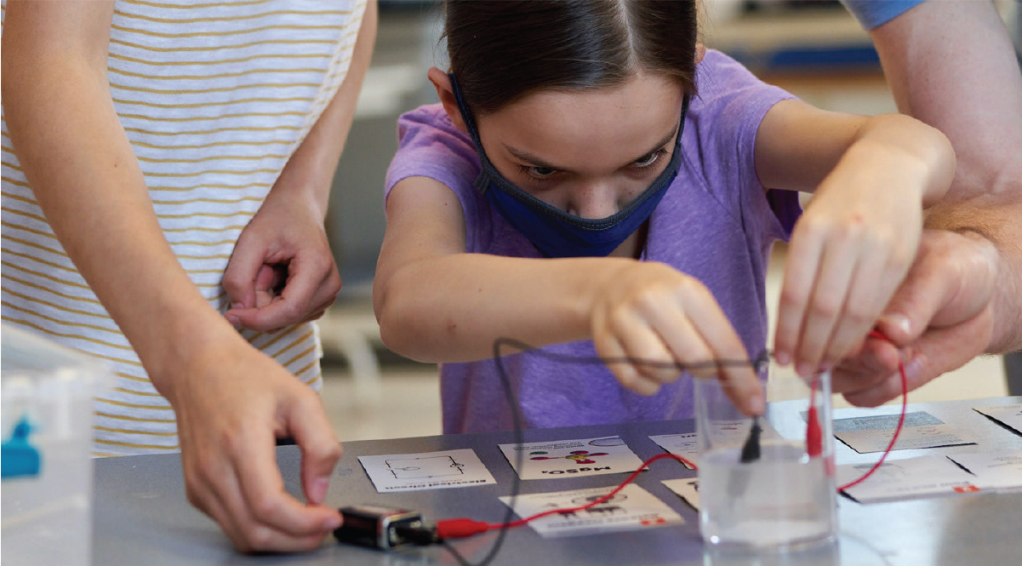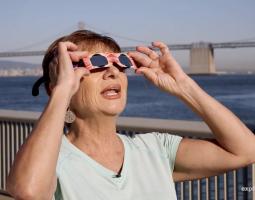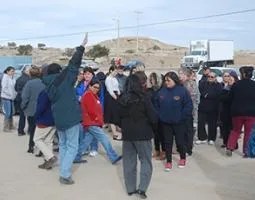Learn NASA Science
Contents
- Ages 8-10
- Explore with Simulations and Interactives
- Take a Field Trip
- Watch NASA Videos
- Ages 11-13
- Explore with Simulation and Interactives
- Take a Field Trip
- Ages 14-18
- Explore with Simulation and Interactives
- Watch NASA Videos
- Take a Field Trip
- Ages 19+
- Be a Citizen Scientist
- Explore with Simulations and Interactives
- Take a Field Trip
Ages 8-10
Explore with Simulations and Interactives
ASTROMATERIALS RESEARCH & EXPLORATION SCIENCE (ARES)
- Where in the World Interactives: Have fun earning badges as you complete the NASA Expedition Earth Where in the World interactives! Engage with astronaut photographs of Earth taken with hand-held cameras by crew on the International Space Station. Learn fun facts about features, locations, and the geography of Earth.
BRINGING THE UNIVERSE TO AMERICA’S CLASSROOM
- Solar System Explorer: Explore an accurate online model of our solar system that is based on NASA imagery and other real data. Navigate through space, control time, and explore the Sun, planets, and moons from up close and far away.
COSMIC DATA STORIES
- Carina Mini Data Story: Explore Hubble and JWST images of the Carina Nebula in a virtual sky and learn how astronomers use different types of light to learn about objects in space.
- Green Comet Mini Data Story: Check out the path of Comet ZTF, the “Green Comet,” through the sky, find out why it's green and discover why comet tails point where they do!
GLOBE MISSION EARTH - MY NASA DATA
- Chlorophyll Concentrations and Incoming Solar Radiation: Using interactive maps of chlorophyll concentration, students will identify patterns to describe the relationship between phytoplankton distribution and incoming shortwave radiation.
- Cloud Sort Activity: Learn about the different cloud types and their names. Match cloud photos and names by cloud type and for all types. Evaluate the types of clouds represented in various data displays.
- Global Phytoplankton Distribution: Using interactive maps of chlorophyll concentration, students will identify patterns to formulate their explanations of phytoplankton distribution over time and space.
- Interactive Weather Observations: Students track weather over time and create a bar chart to track their data.
- Patterns in Earth’s Surface Temperature: Using interactive maps of surface (skin) temperature and land cover classification in Austin, Texas, students will analyze how surface (skin) temperatures vary across a community and determine what factors contribute to this variation. Upon completion of this lesson, students will be able to describe how human activity alters the local environment.
- Sky Color and Visibility: In this lesson, students will explore the effect of aerosols on sky color and visibility by using an interactive virtual model.
INFINISCOPE
- Phases of Matter Visualization: Experiment with temperature and pressure on different planets to create phase change diagrams for water, carbon dioxide, and methane.
- Moon Phases Explorer: Play a game against Lucia to test your moon phase knowledge or explore the 3D model of the phases of the moon.
NASA @ MY LIBRARY
- SciGames: A free collection of web based games and interactives, including a solar system simulator, rover games, and more.
NASA’S UNIVERSE OF LEARNING
- ViewSpace: A free, web-based collection of dozens of digital interactives and hundreds of videos highlighting the latest developments in astronomy and Earth science.
- Videos from NASA’s Universe of Learning: Watch visualizations of cosmic objects that tell multiwavelength science stories and create 3D astronomy experiences.
NASA's EYES
- NASA's Eyes: A suite of browser-based 3D simulations of the entire Solar System, including hundreds of planets and moons, over 160 NASA missions in real-time from start to finish, thousands of asteroids, and much much more. The homepage has a list of Eyes apps that anyone can use with a mobile phone, laptop, or desktop, as long as you have a web browser and an internet connection. Apps include:
- Eyes on the Solar System: The flagship of Eyes products, Eyes on the Solar System allows you to go anywhere in the Solar System from 1949-2049, with accurate trajectories, orbits, events, landings, eclipses, and much more. You can embed any link from Eyes on the Solar System into any web page as an iframe.
- Eyes on the Earth: Eyes on the Earth will give everyone in the world access to the latest “Vital Signs” of the Earth, such as carbon dioxide, temperature, carbon monoxide, ozone, etc. All of the data is straight from NASA missions and updated multiple times per day.
- Eyes on Exoplanets: Eyes on Exoplanets let you travel to every exoplanet ever found, anywhere in the galaxy
- Eyes on Asteroids: Eyes on Asteroids lets you monitor the closest Near-Earth Objects that are approaching Earth, currently 38,000 and counting. See the next five closest asteroid approaches with “Asteroid Watch” and learn about past, present and future NASA missions that explore asteroids and comets.
Take a Field Trip
INFINISCOPE
- Our Wonder for the Stars: A virtual field trip to investigate space exploration of the past and NASA’s newest endeavor, James Webb Space Telescope.
- Extinction Story: Travel back in time to the dinosaur extinction event and investigate the layer of clay as evidence of a meteor impact in Hell Creek, Montana.
OPENSPACE
- Field Trip: Space Flight OLogy: Go on a virtual journey from Earth, to the International Space Station, to the Moon and beyond. Experience the thrill! See the sites! And discover what goes into successful mission planning. Watch the video and then test your knowledge!
- Field Trip: Mars OLogy: Take an expedition across the Martian landscape, over canyons, impact craters, volcanoes and the landing site of a Mars rover. Watch the video and then test your knowledge!
Watch NASA Videos
NASA eCLIPS
- NASA’s Our World: Explore NASA’s Our World videos to learn more about NASA-inspired science (the natural world) and engineering (the designed world) topics.
- Ask SME: Close-up with a NASA Subject Matter Expert: Find out more about NASA Subject Matter Experts (SME) and their career path to NASA.
Ages 11-13
Explore with Simulation and Interactives
ASTROMATERIALS RESEARCH & EXPLORATION SCIENCE (ARES)
- Where in the World Interactives: Have fun earning badges as you complete the NASA Expedition Earth Where in the World interactives! Engage with astronaut photographs of Earth taken with hand-held cameras by crew on the International Space Station. Learn fun facts about features, locations, and the geography of Earth.
GLOBE MISSION EARTH - MY NASA DATA
- My NASA Data story maps provide interactive visualizations for students to explore and analyze various phenomena including Air Quality, Creation of Urban Heat Islands, Exploring Patterns of Human Geography and COVID-19, Global Phytoplankton Distribution, Hurricanes as Heat Engines and Ocean Circulation Patterns. The story maps can be found on the Story Map Collections page
INFINISCOPE
- Phases of Matter Visualization: Experiment with temperature and pressure on different planets to create phase change diagrams for water, carbon dioxide, and methane.
NASA @ MY LIBRARY
- SciGames: A free collection of web based games and interactives, including Matter Sorter (how well do you know the states of matter?), and Planet Families (build your own solar system).
NASA’S UNIVERSE OF LEARNING
- ViewSpace: A free, web-based collection of dozens of digital interactives and hundreds of videos highlighting the latest developments in astronomy and Earth science.
- Videos from NASA’s Universe of Learning: Watch visualizations of cosmic objects that tell multiwavelength science stories and create 3D astronomy experiences.
NASA's EYES
- NASA's Eyes: A suite of browser-based 3D simulations of the entire Solar System, including hundreds of planets and moons, over 160 NASA missions in real-time from start to finish, thousands of asteroids, and much much more. The homepage has a list of Eyes apps that anyone can use with a mobile phone, laptop, or desktop, as long as you have a web browser and an internet connection. Apps include:
- Eyes on the Solar System: The flagship of Eyes products, Eyes on the Solar System allows you to go anywhere in the Solar System from 1949-2049, with accurate trajectories, orbits, events, landings, eclipses, and much more. You can embed any link from Eyes on the Solar System into any web page as an iframe.
- Eyes on the Earth: Eyes on the Earth will give everyone in the world access to the latest “Vital Signs” of the Earth, such as carbon dioxide, temperature, carbon monoxide, ozone, etc. All of the data is straight from NASA missions and updated multiple times per day.
- Eyes on Exoplanets: Eyes on Exoplanets let you travel to every exoplanet ever found, anywhere in the galaxy
- Eyes on Asteroids: Eyes on Asteroids lets you monitor the closest Near-Earth Objects that are approaching Earth, currently 38,000 and counting. See the next five closest asteroid approaches with “Asteroid Watch” and learn about past, present and future NASA missions that explore asteroids and comets.
Take a Field Trip
INFINISCOPE
- Exploring Physics: Solving Motion at the Fairways: Can you solve the seven basic physics in motion problems on this miniature golf course?
OPENSPACE
- Field Trip: Space Flight OLogy: Go on a virtual journey from Earth, to the International Space Station, to the Moon and beyond. Experience the thrill! See the sites! And discover what goes into successful mission planning. Watch the video and then test your knowledge.
- Field Trip: Mars OLogy: Take an expedition across the Martian landscape, over canyons, impact craters, volcanoes and the landing site of a Mars rover. Watch the video and then test your knowledge!
Ages 14-18
Explore with Simulation and Interactives
ASTROMATERIALS RESEARCH & EXPLORATION SCIENCE (ARES)
- Where in the World & Classifying Moon Rocks Interactives: Engage with interactives that allow you to interact with NASA data including astronaut photos or Earth (Where in the World) or Apollo Moon rocks (Classifying Moon Rocks). Enjoy learning fun facts with many options to explore more as well as download and personalize your own badge!
- Astromaterials 3D: Explore like never before! This virtual library provides an opportunity for individuals to explore samples from NASA’s Apollo Moon Rock and Antarctic Meteorite collections! Interact with each sample as you explore the exterior and interior of samples, drop a pin to identify and share interesting sample features and so much more!
COSMIC DATA STORIES
- Mini Data Stories: Online experiences for exploring NASA imagery in an interactive virtual sky, with written guides and videos from scientists sharing why they study these objects.
GLOBE MISSION EARTH - MY NASA DATA
- My NASA Data story maps provide interactive visualizations for students to explore and analyze various phenomena including Air Quality, Creation of Urban Heat Islands, Exploring Patterns of Human Geography and COVID-19, Global Phytoplankton Distribution, Hurricanes as Heat Engines and Ocean Circulation Patterns. The story maps can be found on the Story Map Collections page.
INFINISCOPE
- Stellar Nursery: Create stars from the stellar nebula and follow them through their life cycle to see what types of stars create black holes and which create dwarf stars. What will our Sun become?
NASA @ MY LIBRARY
- SciGames: A free collection of web based games and interactives, including Shadow Rover (find lunar ice with a rover based on NASA’s VIPER) and Rover Coder (program this Mars rover to reach its targets).
NASA’S UNIVERSE OF LEARNING
- ViewSpace: A free, web-based collection of dozens of digital interactives and hundreds of videos highlighting the latest developments in astronomy and Earth science.
- Videos from NASA’s Universe of Learning: Watch visualizations of cosmic objects that tell multiwavelength science stories and create 3D astronomy experiences.
NASA's EYES
- NASA's Eyes: A suite of browser-based 3D simulations of the entire Solar System, including hundreds of planets and moons, over 160 NASA missions in real-time from start to finish, thousands of asteroids, and much much more. The homepage has a list of Eyes apps that anyone can use with a mobile phone, laptop, or desktop, as long as you have a web browser and an internet connection. Apps include:
- Eyes on the Solar System: The flagship of Eyes products, Eyes on the Solar System allows you to go anywhere in the Solar System from 1949-2049, with accurate trajectories, orbits, events, landings, eclipses, and much more. You can embed any link from Eyes on the Solar System into any web page as an iframe.
- Eyes on the Earth: Eyes on the Earth will give everyone in the world access to the latest “Vital Signs” of the Earth, such as carbon dioxide, temperature, carbon monoxide, ozone, etc. All of the data is straight from NASA missions and updated multiple times per day.
- Eyes on Exoplanets: Eyes on Exoplanets let you travel to every exoplanet ever found, anywhere in the galaxy
- Eyes on Asteroids: Eyes on Asteroids lets you monitor the closest Near-Earth Objects that are approaching Earth, currently 38,000 and counting. See the next five closest asteroid approaches with “Asteroid Watch” and learn about past, present and future NASA missions that explore asteroids and comets.
Watch NASA Videos
NASA eCLIPS
- NASA Launchpad: Explore NASA Launchpad videos to learn more about NASA innovations and Technologies that propel us into the future.
- Ask SME: Close-up with a NASA Subject Matter Expert: Find out more about NASA Subject Matter Experts (SME) and their career path to NASA.
Take a Field Trip
INFINISCOPE
- Our Wonder for the Stars: A virtual field trip to investigate space exploration of the past and NASA’s newest endeavor, James Webb Space Telescope.
- Crater Explorer: Take a trip around the globe to find and learn more about the craters of Earth.
Ages 19+
Be a Citizen Scientist
NASA EARTH SCIENCE EDUCATION COLLABORATIVE
- GLOBE Observer Getting started Videos: Using a smart phone and mobile app, volunteers can contribute observations of changes in their local environment that complement or help interpret NASA and other satellite imagery; watch these short videos to learn why NASA wants your observations of Clouds, Mosquito Habitats, Land Cover, and Tree Height.
Explore with Simulations and Interactives
ASTROMATERIALS RESEARCH & EXPLORATION SCIENCE (ARES)
- Where in the World & Classifying Moon Rocks Interactives: Learners of ALL ages can have fun earning badges as you engage with interactives that allow you to interact with NASA data including astronaut photos or Earth (Where in the World) or Apollo Moon rocks (Classifying Moon Rocks). Enjoy learning fun facts with many options to explore more!
- Astromaterials 3D: Explore like never before! This virtual library provides an opportunity for individuals to explore samples from NASA’s Apollo Moon Rock and Antarctic Meteorite collections! Interact with each sample as you explore the exterior and interior of samples, drop a pin to identify and share interesting sample features and so much more!
COSMIC DATA STORIES
- Mini Data Stories: Online experiences for exploring NASA imagery in an interactive virtual sky, with written guides and videos from scientists sharing why they study these objects.
INFINISCOPE
- Stellar Nursery: Create stars from the stellar nebula and follow them through their life cycle to see what types of stars create black holes and which create dwarf stars. What will our Sun become?
- Phases of Matter Visualization: Experiment with temperature and pressure on different planets to create phase change diagrams for water, carbon dioxide, and methane.
- Atmospheric Chamber: Experiment with partial pressure and wavelengths among a variety of atmospheric compounds. Click and drag to expand the graph to investigate the emission/absorption lines produced under a variety of conditions.
NASA’S UNIVERSE OF LEARNING
- ViewSpace: A free, web-based collection of dozens of digital interactives and hundreds of videos highlighting the latest developments in astronomy and Earth science.
- Videos from NASA’s Universe of Learning: Watch visualizations of cosmic objects that tell multiwavelength science stories and create 3D astronomy experiences.
Take a Field Trip
INFINISCOPE
- Dino Doom: Follow in the footsteps of Walter Alvarez, trekking the globe seeking evidence for the mass extinction event of nearly 75% of the plant and animal species on Earth and is marked by a thin layer of iridium clay found throughout the world in marine and terrestrial rocks. Was it an asteroid or something else?
Find Educational Activities and Resources

Digital Resources
Browse awesome, ready-to-use activities and resources to launch your NASA Science investigations

Lessons and Activities
Explore NASA Science lessons and activities to help make your curriculum out-of-this-world!

Learning Resources
Add some “space” to your programming with these ready-to-use resources and activities that bring NASA Science to life in your community.

Professional Learning
Refuel with these educator-focused resources that will blast your classroom or program to infinity and beyond.
























